Do you want to craft custom t-shirts with a professional appearance? Screen printing and sublimation make some of the most durable types of T-shirts prints you will ever find. But when you compare screen printing vs sublimation, which process is best for you?
Screen printing and sublimation use different methods to create durable and high-quality prints. Screen printing uses a stencil, thick inks, and a heat source and requires a lot of time. Sublimation printing uses a chemical process to bond with the fibers of polyester fabric and takes little time.
In this article, you will learn which printing method takes more time and costs more. You will discover the key differences in the printing process for each method. Finally, you will find out the pros and cons of sublimation and screen printing.
Quick Navigation
- What is Screen Printing?
- What is Sublimation?
- Screen Printing vs Sublimation: Key Points
- What’s the Difference Between Screen Printing and Sublimation?
- Are Screen Print Transfers the Same as Sublimation?
- Screen Printing vs Digital Printing
- Screen Printing vs Heat Transfer Vs Sublimation
- Screen Print vs Vinyl vs Sublimation
- Screen Printing vs Sublimation: Which is Better?
What is Screen Printing?
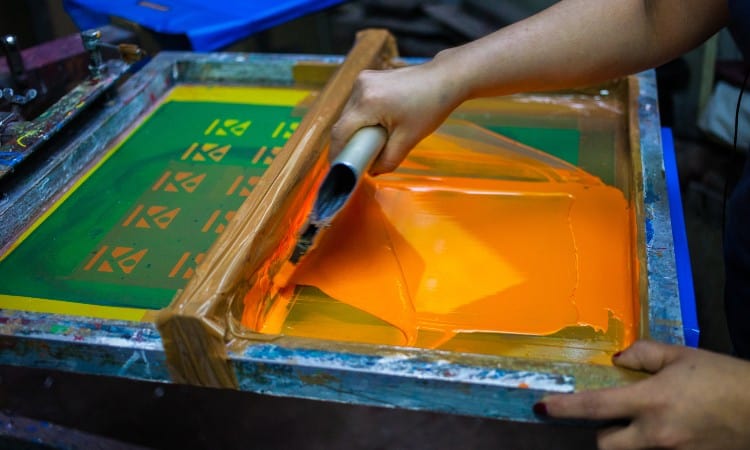
Screen printing uses a stencil and a squeegee to squeeze ink through a screen and layer a design on top of the fabric. This method, also called silk screening, is one of the oldest forms of printed art ever invented! It creates thick, raised designs on the surface of a t-shirt.
Despite its ancient history, this method remains popular with both professional printers and home artists. One of the best things about screen printing is that it makes high-quality designs because it uses such thick inks that they leave a raised, slightly 3D design on top of the t-shirt. Plus, you can screen print on almost any kind or color of fabric using this method.
As with anything, though, screen printing also has some limitations. You have to apply one layer of color at a time through the stenciled screens, meaning that this method works best for designs requiring fewer colors. For instance, it is not a great choice if you want to print a meme or a photo onto a tee!
Also, it only works on flat surfaces like a smooth piece of fabric. You could not screen print onto a mug or baseball cap very easily.
So, how exactly does screen printing work?
- First, you take an image, a logo, or some lettering and separate it into its individual color components. Most professionals use graphic design software for this process to make things easy! You can also simply use a one-color design or lettering.
- For every color you plan to use, you will need to prepare a stencil on a mesh screen. The stencil is the negative space around your image. You can make this stencil using a Cricut and some vinyl, or you can use more professional methods like creating a light-sensitive emulsion just like you would when developing old photos.
- Next, smooth a layer of thick plastisol ink over the stencil.
- Use a special squeegee to push the ink through the unstenciled portions of the mesh screen onto the t-shirt.
- If your design has multiple colors, you will have to apply each color layer one at a time through its own individual screen.
- Finally, you will use a heat press to cure and set the ink!
Setting up a screen print requires a lot of time and skill, but you can reuse your screens many times once you have them just so. This makes screen printing a good choice for large batches of shirts–you can just keep reusing your screens to make more of the same design!
What is Sublimation?
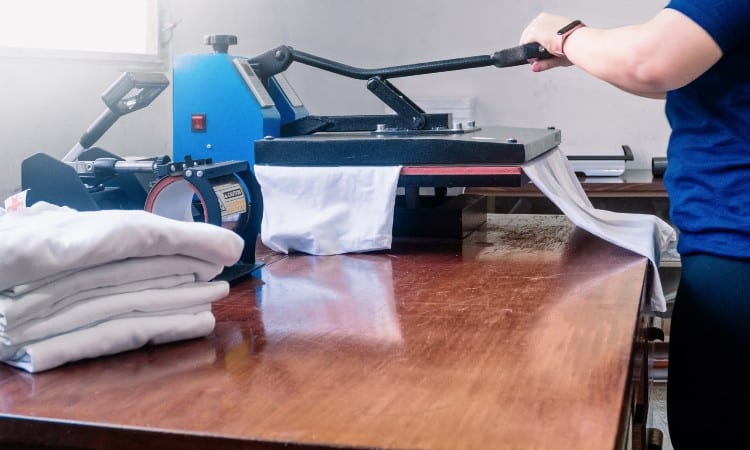
Sublimation uses heat and pressure to chemically bond dye with the fibers inside synthetic fabrics. This newer printing method is rapidly gaining popularity for professional printers and small business owners because it creates incredibly durable and vivid designs. It also uses the full digital color scale of the CYMK printer model, meaning that you can easily print full-color photos or images using sublimation.
Sublimation is a chemical process that involves turning a solid directly into a gas. If you remember your high school science, you will know that usually, an object moves from a solid to a liquid to a gas. Sublimation skips the liquid stage and goes straight to gas.
In t-shirt printing, it works like this: the extreme heat of a heat press sublimates the dye on a special transfer paper. The dye turns into a gas and infiltrates deep into the fabric of the shirt. At the same time, the heat opens up the polymer fibers inside the polyester fabric, allowing the gaseous dye inside the actual fibers of the fabric.
Once you remove the shirt from the press, the ink cools and resumes its solid form, but at this point, it has bonded with the cloth on a molecular level! This means that a sublimation print will quite literally last as long as the fabric of the shirt.
Here are the bare bones of how you make a sublimation print:
- First, you need to find a detailed and high-quality digital design. You can use photos or high-resolution images that you make yourself or download into a design program. In most cases, you need to mirror the image to not end up backward on your shirt!
- Next, set up a sublimation printer with sublimation inks. Sublimation printers work very much like any regular old laser printer, except they require special sublimation ink. They still use the four basic cartridges of cyan, magenta, yellow, and black ink.
- Insert a piece of sublimation transfer paper into the printer, and print your design onto the paper. You can use the transfer right away or save it for later.
- Applying the transfer to the shirt may take a little practice. You need to prepare the surface of the shirt (or other objects) by removing any lint, dust, or wrinkles. Then make sure the transfer paper will not move by using heat-safe tape.
- Finally, apply heat and pressure by using your heat press for the designated amount of time.
The sublimation process does not take a lot of time. It works great if you want just one or two custom prints. You can also sublimate on many kinds of objects, including hard surfaces like mugs or banners with a polymer coating.
The downside of sublimation is that it only works on synthetics or objects given a polymer coating. It does not work on cotton.
You also cannot easily use sublimation on dark-colored fabric. It works best on white or light-colored polyester t-shirts.
Screen Printing vs Sublimation: Key Points
This chart will give you a quick idea of the key differences between screen printing and sublimation.
| Screen Printing | Digital Printing | |
|---|---|---|
| Durability | Durable but will crack and peel after many washes | Extremely durable and will last as long as the shirt fabric |
| Quality | High-quality with raised designs and good visual and tactile contrast | High-quality with vivid colors and lots of detail |
| Complexity | Limited | Easily creates detailed, complex designs |
| Consistency | Very consistent and easily makes duplicates | Consistent, but requires printing a new transfer sheet for each shirt |
| Cost Efficiency | Cost-efficient for batch printing | Cost-efficient for small custom orders |
| Multi-Color Prints | Difficult, works better with few colors | Easily makes multi-color images such as photos |
| Color Blending | Possible but requires time and skill | Easily done digitally |
| Set-Up Time and Cost | Requires a lot of set-up time. Cost varies based on size of order and complexity of design. | Little set-up time. Does require some pricey equipment as a start-up cost. |
| Quantity | Easily creates large batches of the same design. | Can make large or small batches without any difference in the amount of time required for each shirt. |
| Best Fabric | 100% cotton | 100% polyester |
| Special Effects | Many available, including glitter inks or 3D effects | Limited |
| Best for | Bold, one or two-color designs on a contrasting color of shirt | Detailed multi-colored designs on white shirts |
| Average Cost Per Shirt | Varies a lot, $15-$45 on average | Varies a lot, $15-$45 on average |
What’s the Difference Between Screen Printing and Sublimation?
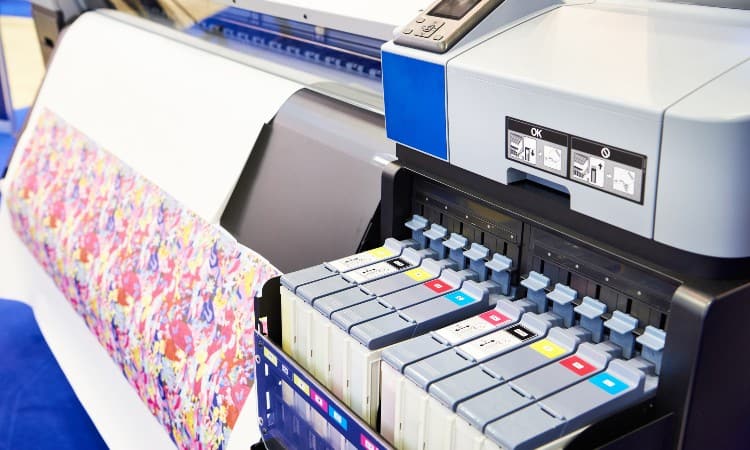
The biggest difference between screen printing and sublimation is the method of applying ink to a shirt. Screen printing uses ink pushed through a stencil onto the fabric and sublimation uses a chemical process to bond dye with the fabric fibers.
Both methods create high-quality designs, but they have different pros and cons because of the unique printing methods used in each process.
Durability
Sublimation prints last longer than screen-printed designs. Screenprints hold up well through many washes, but eventually, you will see the raised-ink design crack or begin to peel away from the fabric. Sublimation designs will never crack, peel, or fade because the dye bonds deep beneath the surface of the fabric.
Before the invention of sublimation, many printers considered screen printing to offer one of the most durable forms of t-shirt design. Yes, sublimation is more durable, but screen printing still lasts for a long time! Screenprints use a special kind of dye called plastisol ink that holds up well over time.
Quality
Both sublimation and screen print designs are high-quality but in different ways. Sublimation prints offer vivid, bright colors that will not fade over time. This printing method can also famously create detailed and multi-colored images with ease.
Screenprints use fewer colors to create raised designs that offer a bold, tactile contrast of colors and textures. The designs look classy compared to a typical DTG print and will last for a long time.
Complexity
Sublimation printing allows for more complex designs than screenprinting in most cases. This is because you print a digital image right onto a transfer paper when using the sublimation method.
For a screen print, you have to make your stencil first. You can create detailed stencils, of course, but this usually involves making a complicated light emulsion that works very much like a photo negative. You need a lot of chemicals, a lot of skill, and a lot of patience to make a detailed screen print stencil!
For this reason, it’s much easier to make complex sublimation prints. In this process, you put all the work in before the printing by creating a high-quality digital image using graphic design software. Then the printer does all the work as it prints the design straight onto a transfer paper!
Consistency
Both screenprinting and sublimation allow you to consistently recreate the same design. That said, both methods may have minor discrepancies caused by smudging ink or bits of dust stuck in the design.
Screen printing has pretty great consistency because you can reuse your individual color screens many times to keep making the same design again and again. Over time, you may find some slight variations from one design to the next, such as a smudge here or there. But overall, screen printing allows for consistency of designs.
Sublimation printing also allows for consistency because you just have to print your digital image onto transfer paper again if you want to make a duplicate shirt. The danger of variation comes into play here because you have to set up the transfer on each shirt with care to avoid any ghosting caused by moving transfer paper or dust smudges caused by bits of lint stuck on the fabric.
Cost-Efficiency
If you want to make custom-ordered t-shirts, you will find sublimation more cost-efficient. On the other hand, if you need to make a large-scale order of one design, screen printing is much more cost-efficient.
It takes a lot of time and effort to set up a screen print, so you would lose a lot of money doing this just to make one or two shirts. But if you can reuse your screen ten, twenty, or a hundred times for the same order, you will find the time and effort worthwhile.
Sublimation printing requires the same amount of work every time you make a shirt. It isn’t necessarily a lot of work, but this does mean that you can cost-effectively make one shirt as well as ten.
Multi-Colored Prints
Sublimation works much better for multi-colored prints than screen printing. This is because you have to separate the colors and apply them one layer at a time in a screenprint.
Professional screen printers often use large machines equipped with many arms, each arm holding a screen, to apply many colors to an image. But this takes a lot of time and work to set up!
Sublimation printers mix primary colors to create multi-colored, complex images with ease. That said, these designs work best on white fabric. The designs will not show up well on a darker material.
Why does sublimation work best on white fabric? For two reasons. First, a printer working with the CYMK model cannot create white ink. When you think about it, you can’t mix colors to make white! This means that you have to leave negative space in a photo or image where you want the white fabric to show through.
Secondly, if you print blue ink onto blue fabric, you will not see the blue ink very well! You need the contrast of ink and light fabric to see a sublimation print. This is a big advantage of screen printing, which works just fine on any color of shirt!
Color Blending
Color blending and getting shades of colors just right is pretty difficult in both sublimation and screen printing, though the process works differently in each method.
For screen printing, you have to mix the shades of color you want by hand in most cases. Professionals may use computerized paint blending machines (kind of like what they have at your local Home Depot!). But either way, this means that your mixed shades could vary from one project to the next.
In some cases, artists will blend color directly on the screen to create cool ombre effects, but this also takes a lot of skill!
At first glance, blending colors seems easy in a sublimation print. After all, the printer does this for you as it mixes the primary CYMK colors to print onto the transfer paper! But there is a catch here as well.
To get accurate colors in sublimation printing, you have to use software that offers an ICC profile. The way we see colors and how a computer screen displays colors is not the same as how a printer mixes inks! The ICC profile allows the printer to match up with what you see on the computer screen and create accurate, blended colors every time.
Set-Up Time and Costs
In general, screen printing requires more setup time, but sublimation prints may cost more. This varies a lot, though, depending on the kind of design you want to print!
Set-up time for sublimation printing involves creating a digital image and printing it onto transfer paper. In some cases, you can even skip this part of the process by custom-ordering the transfers so that someone else does this part for you!
Screen printing requires a lot of set-up time, even for a simple one-color design. You have to make the stencil and apply ink to the screen. For designs with more than one color, you have to make a separate stencil and screen for each color.
The cost for each printing method comes down to the equipment you need in most cases.
For sublimation, you need a special printer and sublimation inks. You also need graphic design software, transfer paper, polyester shirts, or other polymer-coated blanks.
For screen printing, you can buy expensive equipment, or you can work with homemade mesh screens that you make yourself out of cheap craft equipment. You will need expensive plastisol inks either way, but you can make screen prints without spending a lot of money if you want.
That said, both screen printing and sublimation require a heat press.
Quantity
It’s easier to print t-shirts in large quantities using screen printing, though you can create duplicate designs using sublimation as well.
Once you go through all the trouble of setting up your screens, you can quickly screen print many duplicates using the same screens. You simply have to reapply ink and push it through the same stencil over and over again.
For sublimation printing, you can print out multiple copies of the same design onto transfer paper. You then have to apply the transfer to each shirt using your heat press. However, sublimation allows for small-quantity printing much more easily. You don’t have to spend a lot of time on setup, so you can afford to make just one or two duplicates using this method.
Best Fabrics
The best fabric for sublimation is 100% polyester, and the best fabric for screenprinting is 100% cotton. You can successfully print onto blended fabrics using both methods, though, if you want to mix cheaper polyester with softer cotton.
That said, you can screen print onto many types of fabric, including polyester; you just have to use a few special methods. Sublimation, in contrast, only works on fabric containing a large percentage of polyester. The sublimating process requires synthetic polymers for the chemical dye bonding.
Special Effects
You can use many special effects with screenprinting, but not with sublimation.
Screen printers can use a huge array of special inks such as clear inks, glitter inks, 3D inks, and so on. You can create designs that look hand-painted by using special ink application methods directly onto the mesh screens. With screen printing, the only limit on special effects is how much time and money you want to put into the process.
Sublimation printing has more limits. You can create a vintage, faded look by printing onto shirts that contain a small percentage of cotton if you want. But you can’t use glitter ink or anything of that nature, as you have to depend on the color your printer can mix.
Best For
Screen printing works best for vibrant, raised designs on any color of the shirt. This method can use multiple colors, but designs requiring just a few colors work best. You can easily batch print with screenprinting, which works well for bulk orders.
Sublimation works best on white polyester shirts and can easily create detailed, multi-colored designs. You can’t easily employ many special effects, but you can cost-effectively make just one or two custom-ordered shirts using this method.
Average Cost Per Shirt
The average cost per shirt for a customer can range anywhere from $15.00 to $45.00 on average for both screen printed and sublimation shirts. This huge variation stems from the fact that different companies and artists put in wildly different amounts of setup work and cost depending on the style of the shirt.
For example, if you want to custom-order 50 screen-printed tees that have your company logo printed on them in one color, you may get the shirts for as little as $10 or $15. But if you want to custom-order a screen print of a glittering dragon in a multi-colored design, the printer will have to use special effects, multiple different screens, and a lot of complicated stencils. Obviously, the printer will charge much more for the second kind of design!
Screen printers often charge lower prices for bulk orders, while sublimation printers may not offer this discount.
The average cost per shirt for the printer can vary a lot, too. You have to buy blank shirts, which can range in price from as little $1 to as much as $10 depending on the kind and quality of the shirt. For example, a simple crewneck polyester tee bought in bulk will cost very little, but a high-performance sports uniform made out of polyester may cost much more.
You also have to factor in the cost of the ink and materials you use and the time you spend setting up the print. Finally, don’t forget about equipment costs! If you bought an expensive printer, you will not make much profit on your shirts unless you factor in a percentage of the cost to pay back your start-up fees.
Are Screen Print Transfers the Same as Sublimation?
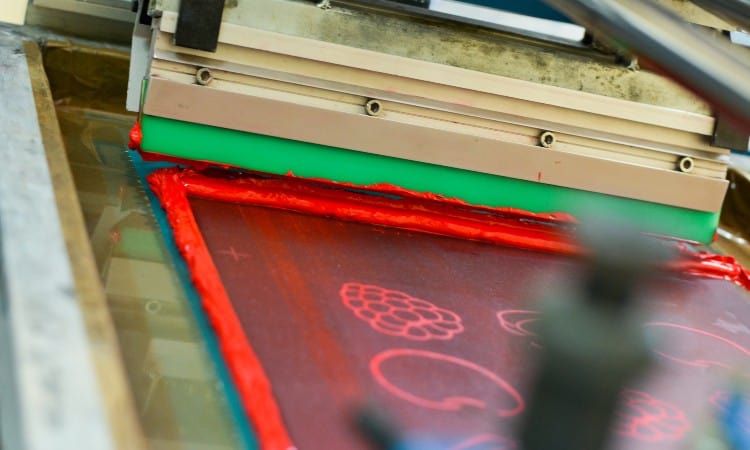
Screenprint transfers are not the same as sublimation transfers. This may seem a little confusing, but the key difference lies in the type of ink used.
Screen printing uses plastisol ink that makes that famous raised, slightly plasticky design on the surface of the fabric. You can screen print onto transfers instead of directly onto fabric in some cases and then use heat to apply the transfer to the shirt. But you still use a mesh screen and plastisol ink to make the design on the transfer paper.
Sublimation prints directly onto the transfer paper using sublimation ink. This special kind of ink will turn into a gaseous form and then chemically bond with the fibers of the fabric when exposed to heat. Then you peel away the paper, leaving the ink embedded in the fabric.
The bottom line here is that both screen printing and sublimation can put ink on transfer paper, but it is a different kind of ink that adheres to the shirt in different ways.
Also, you cannot sublimate onto a screen print ( or at least not easily). If you want a raised, 3D sublimation effect, or to sublimate on a dark-colored shirt, you can print directly onto a special kind of heat-transfer vinyl and then apply this to a shirt.
You can also screen print onto vinyl in some cases to create special effects.
Screen Printing vs Digital Printing
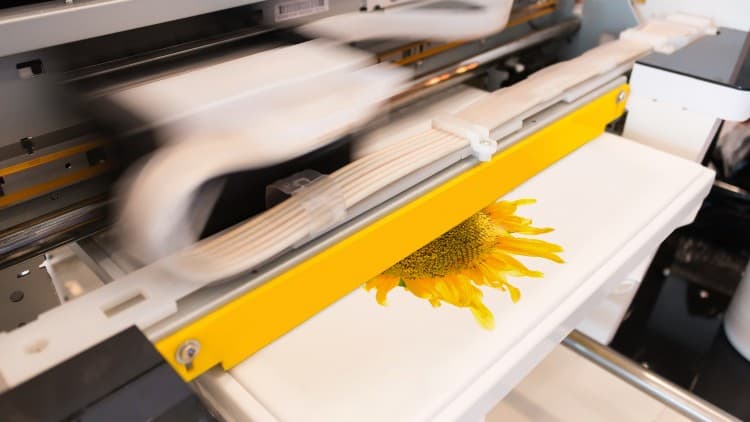
The main difference between screenprinting and digital printing is that screen printing offers better-quality and more durable prints than digital printing. Digital printing uses special printers to apply ink directly onto fabric. In general, DTG or direct-to-garment printing offers the cheapest professional printing method, but it does not make high-quality or long-lasting images.
Screenprints will hold up for many washes without fading or cracking. DTG designs often begin to fade and lose their brightness after a few washes.
Some professionals view sublimation as the up-and-coming replacement for DTG at some point in the future because it can cost-effectively make much more vivid, durable designs!
Screen Printing vs Heat Transfer Vs Sublimation

The biggest difference between screen printing, heat transfers, and sublimation is how dye is applied and the type of ink used.
Screen printing uses plastisol ink pushed through a stencil to create shapes on the fabric.
Heat transfers use designs printed to special transfer paper using a regular laser printer. This transfer will adhere to the shirt like HTV when exposed to heat. This creates a papery, thick surface under the design.
Sublimation, of course, uses heat to turn the dye into gas and allow it to bond with the fabric fibers on a molecular level.
Each method has its own pros and cons. Sublimation is the most durable, but screen printing has an artistic, high-quality appearance. Heat transfers are the cheapest and easy to make at home, but they do not last as long and usually do not look as nice.
Screen Print vs Vinyl vs Sublimation
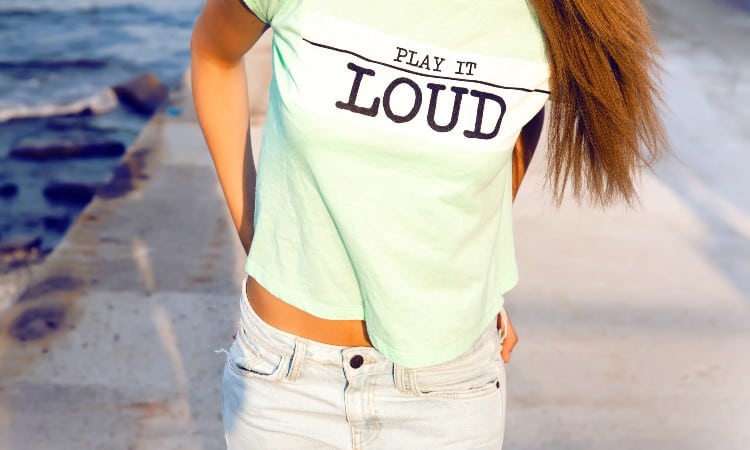
The key difference between screen printing, heat transfer vinyl, and sublimation is that they all use very different methods that make unique styles of designs on a t-shirt. That said, all of these three design options create high-quality images on shirts!
Many artists love screen printing because it allows for so much artistic expression and creates designs that offer bold, clear contrasts of color and texture to the fabric of the shirt.
Heat transfer vinyl, or HTV, also offers many special effects and has the added benefit of low start-up costs for a new printer. This process involves using an electronic cutting machine to cut out shapes of vinyl, which adhere to a shirt when exposed to heat.
Sublimation requires a sublimation printer and dyes to make the most durable designs of all. Plus, it offers multi-colored designs very easily, which screen printing and HTV cannot.
Any of these three methods will make nice shirts. You just have to decide what kind of effect you like best and if you prefer extra durability over a lower cost. Alternatively, you might want multi-color designs instead of special effects.
Screen Printing vs Sublimation: Which is Better?
Screen printing and sublimation both create unique, high-quality designs on t-shirts. If you have not decided which one is better for you, consider this brief summary of the pros and cons of each process.
Sublimation has many advantages. It easily creates multi-color prints like photos and offers extreme durability because the dye bonds with the fibers of the fabric. It also creates vivid, bright designs and works on many objects besides flat fabric.
The downside to sublimation is that it only works well on polyester or polymer-coated surfaces. Plus, it looks best on white or light-colored surfaces and will not show up well on dark fabrics.
The pros of screen printing are that this method creates a uniquely textured, raised design. It looks super classy and remains durable for many washes, though eventually, the design may crack. You can easily fill bulk orders by reusing screens many times.
But screen printing also has limitations. It works best with designs requiring one, two, or three colors. It also requires a lot of set-up time to make the stencils for each color screen before you can print.